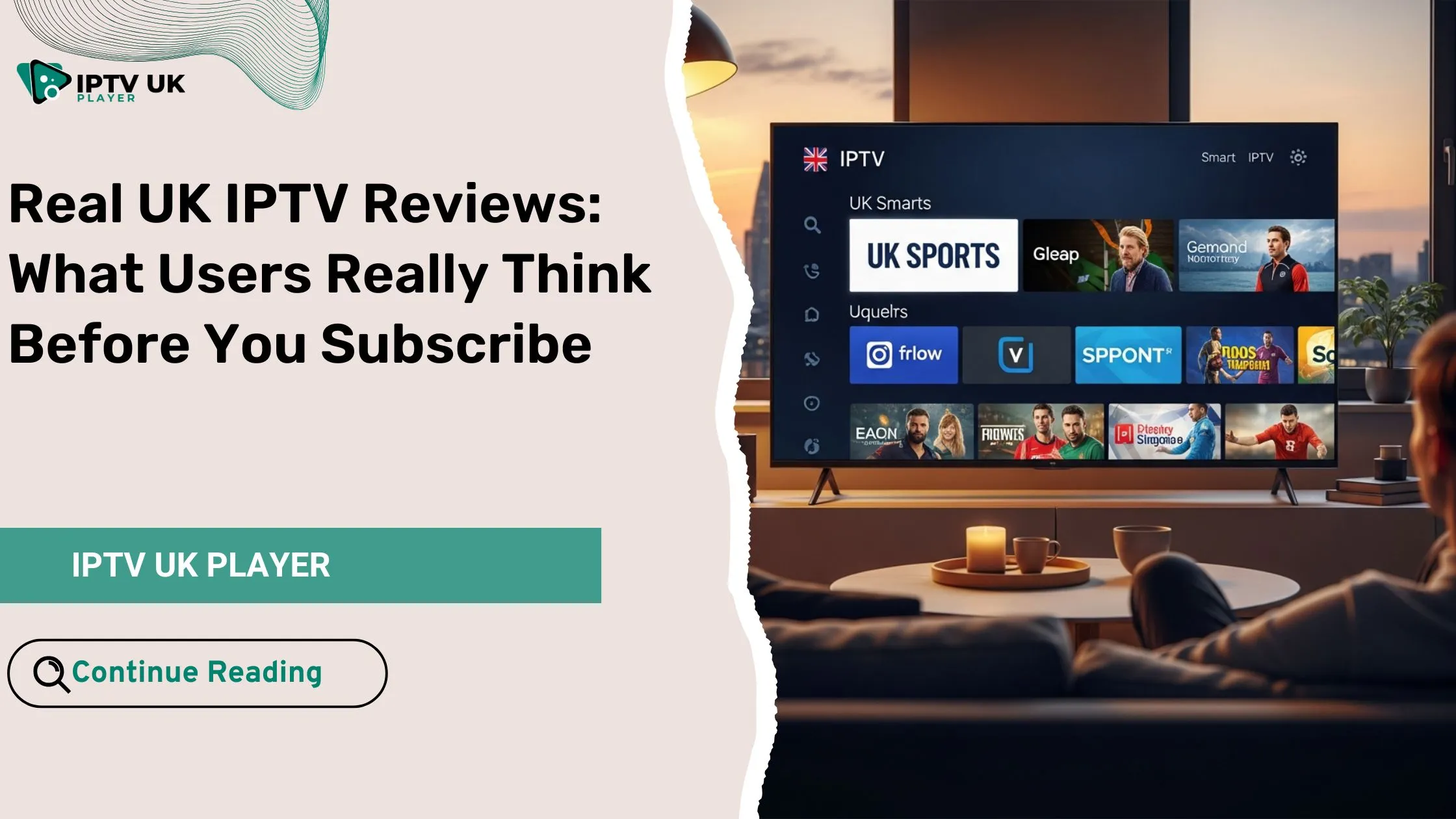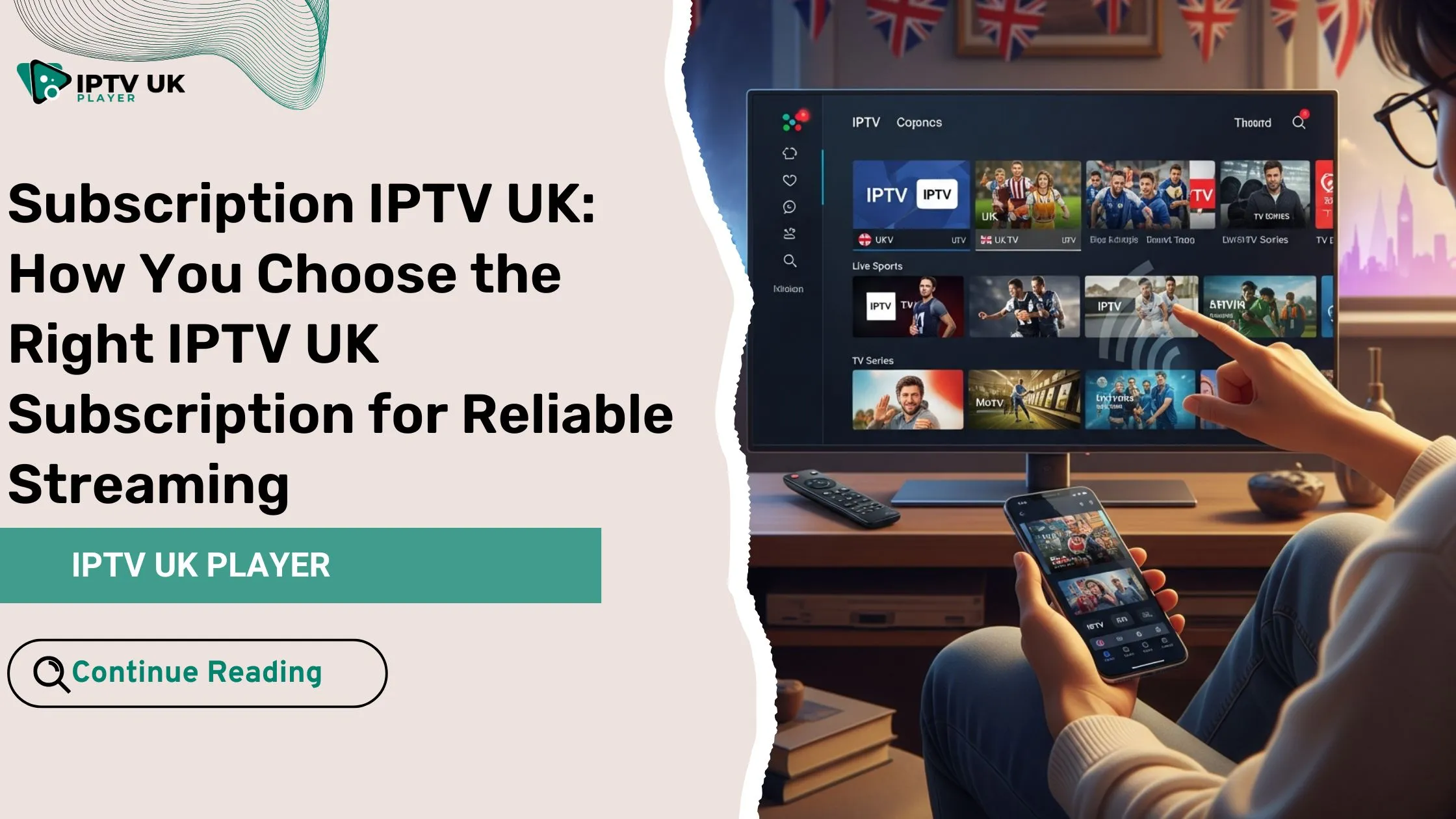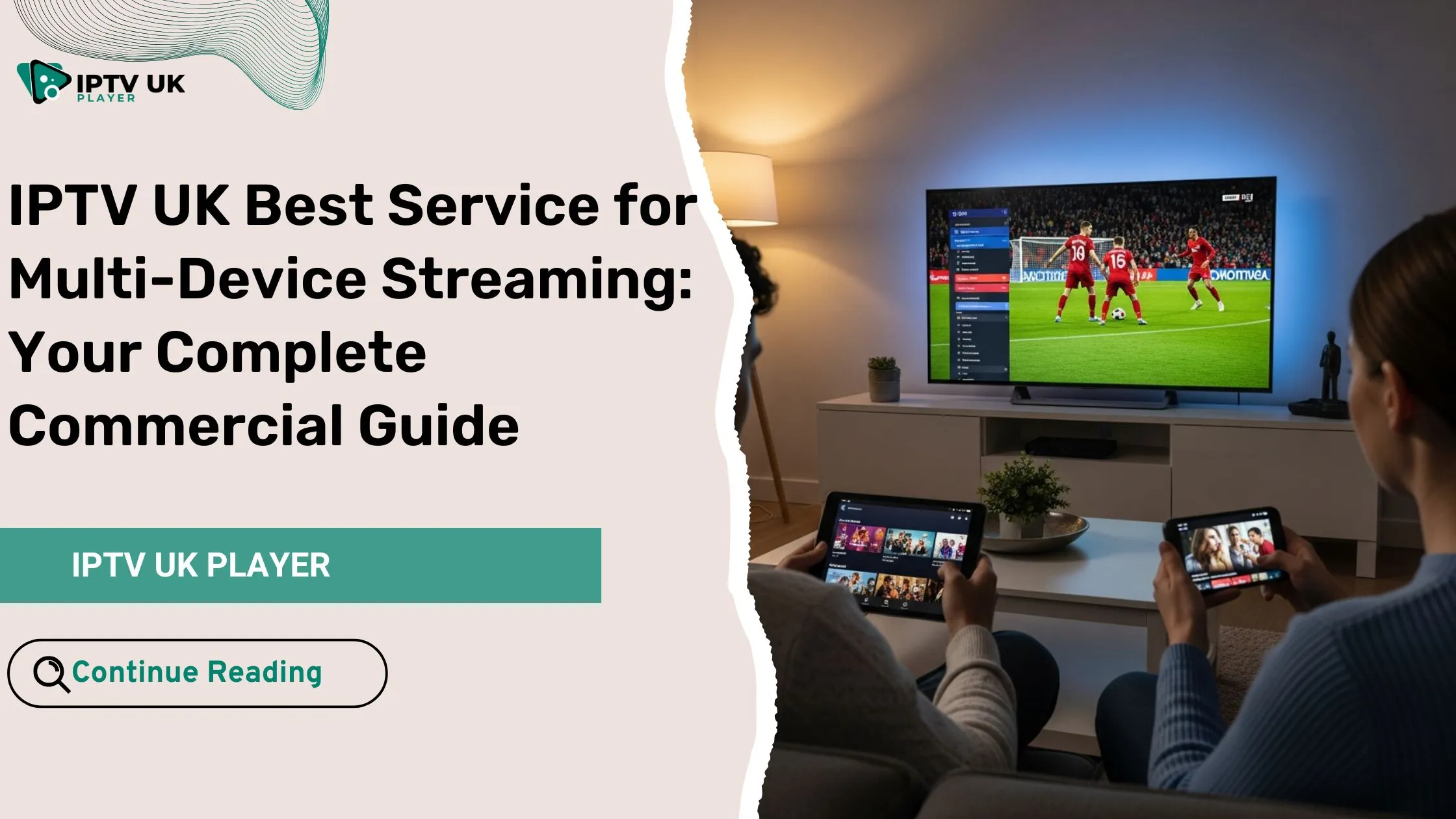Streaming IPTV through VLC can offer exceptional flexibility and freedom—if it’s configured right. If you’ve ever dealt with endless buffering, pixelated images, or lag while trying to enjoy your favorite channels, you’re not alone. Many users jump into VLC with the assumption that it will just work. But for optimal performance, you need to dig a little deeper. This guide will walk you through the top 7 VLC IPTV settings that can significantly enhance your streaming experience.
Table of Contents
Why You Should Use VLC for IPTV Streaming
VLC Media Player remains one of the most powerful and versatile players available. It’s open-source, completely free, and compatible with nearly every format you throw at it. For IPTV, VLC is especially appealing because:
- It supports M3U and M3U8 playlists.
- It can play both live TV and VOD content.
- It’s available across multiple platforms: Windows, macOS, Linux, Android, and even iOS.
- You can customize it extensively to suit your internet speed, device performance, and streaming needs.
If you’re looking for the best IPTV UK service to go along with VLC, IPTV UK Player provides reliable, high-quality streams that integrate seamlessly with VLC.
Preparing VLC for IPTV – Your Essential Setup
Before you tweak VLC’s settings, you should:
- Update VLC: Make sure you’re running the latest version to access all recent optimizations and codec improvements.
- Obtain a Valid M3U Playlist: This could be from a subscription (like IPTV UK Player) or a free source. If you’re unsure how to load it:
How to Load an M3U Playlist into VLC
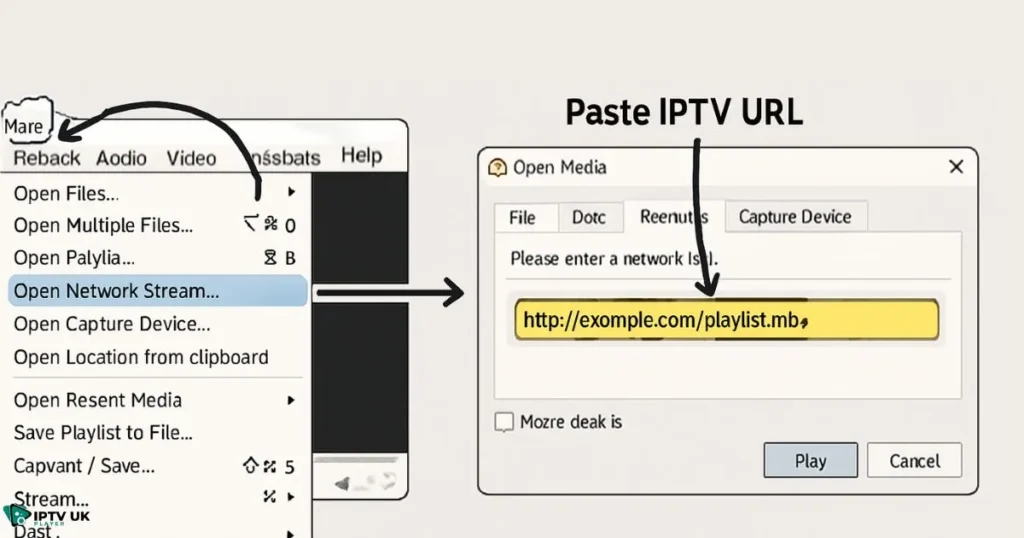
- Open VLC.
- Go to Media > Open Network Stream.
- Paste the M3U URL you received.
- Click Play.
Alternatively, for local playlists:
- Use Media > Open File, then navigate to the M3U file saved on your device.
Refer to our detailed guide: IPTV VLC Media Player Setup Guide – Stream Your Favorite Channels Easily.
Top 7 VLC IPTV Settings to Boost Streaming Performance
Now for the part you came for. These 7 VLC settings can make a world of difference in how smooth and stable your IPTV streaming experience is.
1. Enable Network Caching (Your First Line of Defense Against Buffering)
Navigate to:
- Tools > Preferences > Input/Codecs
- Look for Network Caching (ms)
- Increase the value to 1000 to 3000 ms
This helps VLC buffer more data in advance, which reduces interruptions when your internet fluctuates.
2. Adjust Hardware-Accelerated Decoding
Some systems benefit from this; others don’t. It depends on your hardware.
- Go to Tools > Preferences > Input/Codecs
- Find Hardware-accelerated decoding
- Set it to Automatic, Disabled, or DirectX Video Acceleration (DXVA) depending on your CPU/GPU performance
Test different settings to see which gives smoother playback.
3. Use TCP Instead of UDP for Streaming Stability
Most IPTV streams default to UDP, which can be less reliable on unstable networks. Switch to TCP to improve stability.
- This is usually done in the playlist or by configuring your IPTV provider settings.
- Some providers include “?tcp” at the end of stream URLs.
If you’re using a service like IPTV UK Player, they can provide M3U playlists optimized for TCP.
4. Change the Output Module to Improve Compatibility
You might be seeing black screens or video stutter due to your Output Module setting.
- Go to Tools > Preferences > Video
- Under Output, test these options:
- Automatic
- DirectX (DirectDraw or Direct3D)
- OpenGL
Changing this setting can fix visual glitches, especially on older systems or unique display setups.
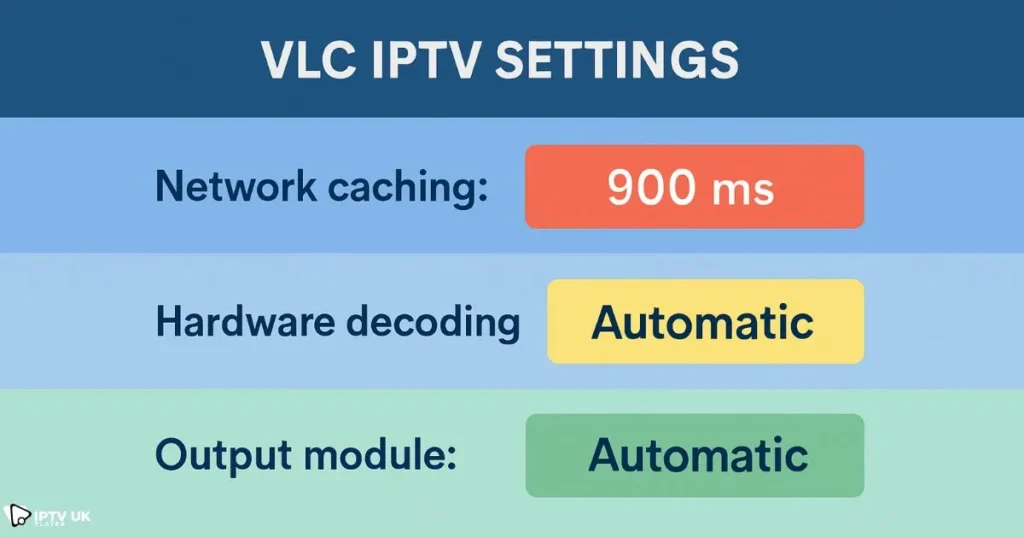
5. Limit Stream Conversion for Lower Bandwidth Usage
VLC sometimes attempts to convert streams on the fly. You can prevent that.
- Access Preferences > Input/Codecs > File Caching
- Reduce conversion quality if you’re on a limited data plan or weak connection
6. Fine-Tune Buffer Size for M3U Playback
Buffering too frequently or experiencing lag? Try this:
- Go to Tools > Preferences > Show Settings: All
- Navigate to Input/Codecs > Access Modules > HTTP(S)
- Adjust the caching value higher
This is especially helpful when playing .ts (MPEG Transport Stream) files from your M3U list.
7. Disable Subtitle Autoloading
Subtitles might seem harmless, but they can slow down performance if not needed.
- Navigate to Preferences > Subtitles/OSD
- Uncheck Enable subtitles
Disabling unnecessary processes saves CPU resources and avoids subtitle loading errors.
Bonus Tips for Advanced VLC IPTV Users
If you’re a power user, consider these extras:
Stream Recording
- Use View > Advanced Controls
- Click the record button while streaming to save live TV
Custom Skins & Remote Access
- VLC supports skins and remote web interfaces
- Great for setting up a home media hub
Auto-Play Playlist on Launch
- Save your M3U in the VLC startup folder or use a scheduled task to launch VLC with the stream
VLC IPTV Settings Table Summary
| Setting | Path in VLC | Recommended Value | Purpose |
|---|---|---|---|
| Network Caching | Input/Codecs | 1000–3000 ms | Fix buffering |
| Hardware Decoding | Input/Codecs | Auto/Disable (varies) | Performance optimization |
| Stream Protocol | M3U or Provider Settings | TCP | More stable IPTV delivery |
| Output Module | Video | DirectX/OpenGL/Auto | Fix playback issues |
| Subtitle Autoload | Subtitles / OSD | Disabled | Reduce CPU load |
| Buffer Size | Access Modules / HTTP(S) | 3000–6000 ms | Smooth streaming |
Solving Common VLC IPTV Streaming Issues
VLC Keeps Buffering
- Increase network caching time
- Use wired internet
- Use optimized M3U links (like from IPTV UK Player)
Channels Not Loading
- Check if the M3U playlist is still active
- Try opening in another device to test
- Make sure VLC is updated
Crashing or Freezing
- Lower video resolution
- Change output module
- Reinstall VLC
Best Practices for VLC IPTV Streaming
- Use wired internet whenever possible
- Close background apps consuming bandwidth
- Restart VLC and router regularly
- Use a VPN if accessing geo-blocked channels (ExpressVPN, NordVPN)
Why IPTV UK Player is Perfect for VLC IPTV
- Compatible M3U playlists for VLC
- 24 to 48-hour IPTV free trial
- Full UK, USA, Sports, French & Arabic channel lineup
- Optimized links for buffering-free streaming
- Dedicated support
👉 Ready to get started? Request your free IPTV trial now
Frequently Asked Questions (FAQ)
How do I use VLC IPTV with an M3U playlist?
Open VLC, go to Media > Open Network Stream, and paste your M3U URL.
What is the best VLC setting for IPTV buffering fix?
Increase network caching to at least 1000ms and use TCP instead of UDP when possible.
Can I use VLC for IPTV on a Firestick?
Yes! Follow our guide: VLC for Firestick: How to Install & Use VLC Player on Firestick
Is VLC IPTV better than other players?
Yes, especially if you’re tech-savvy and want control over playback quality and stability.
How can I record IPTV streams in VLC?
Enable Advanced Controls and press Record during playback.
Conclusion
You now have the blueprint to transform your VLC IPTV streaming into a flawless, buffer-free experience. With the right settings and a trusted IPTV provider like IPTV UK Player, you can enjoy a premium streaming experience tailored to your device and network.
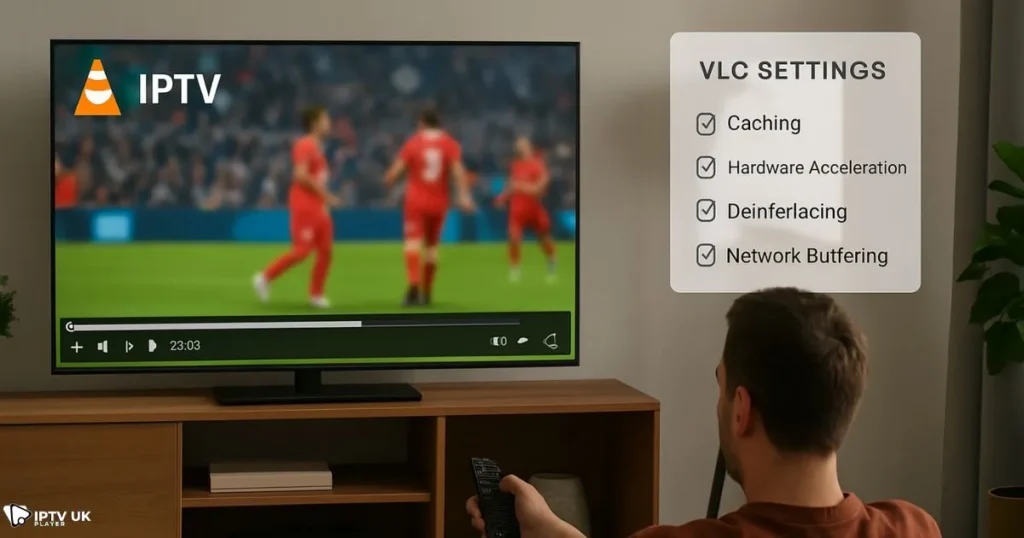
Don’t forget to check out our full IPTV plans and request your free 24-48 hour trial. Pair it with the settings in this guide, and you’re set for success.
Explore more tips in our IPTV VLC Media Player Setup Guide or learn how to stream on Firestick with this step-by-step tutorial.


